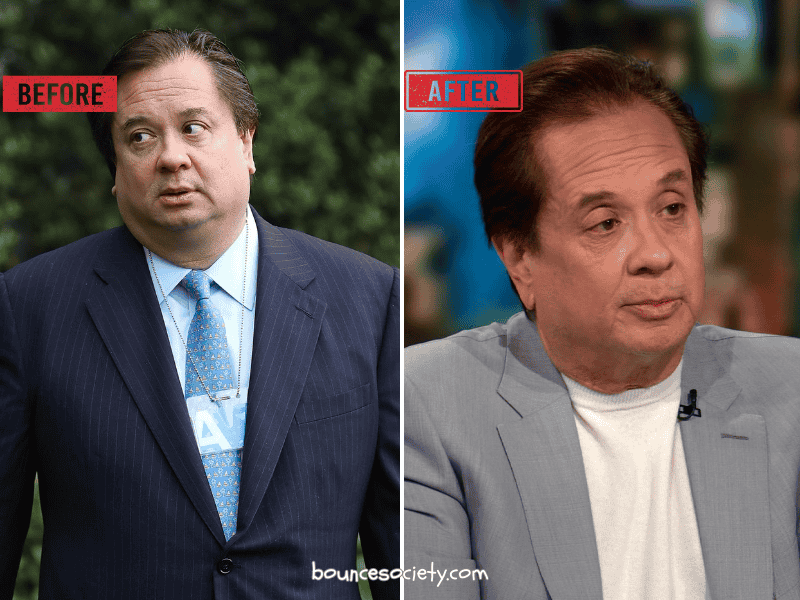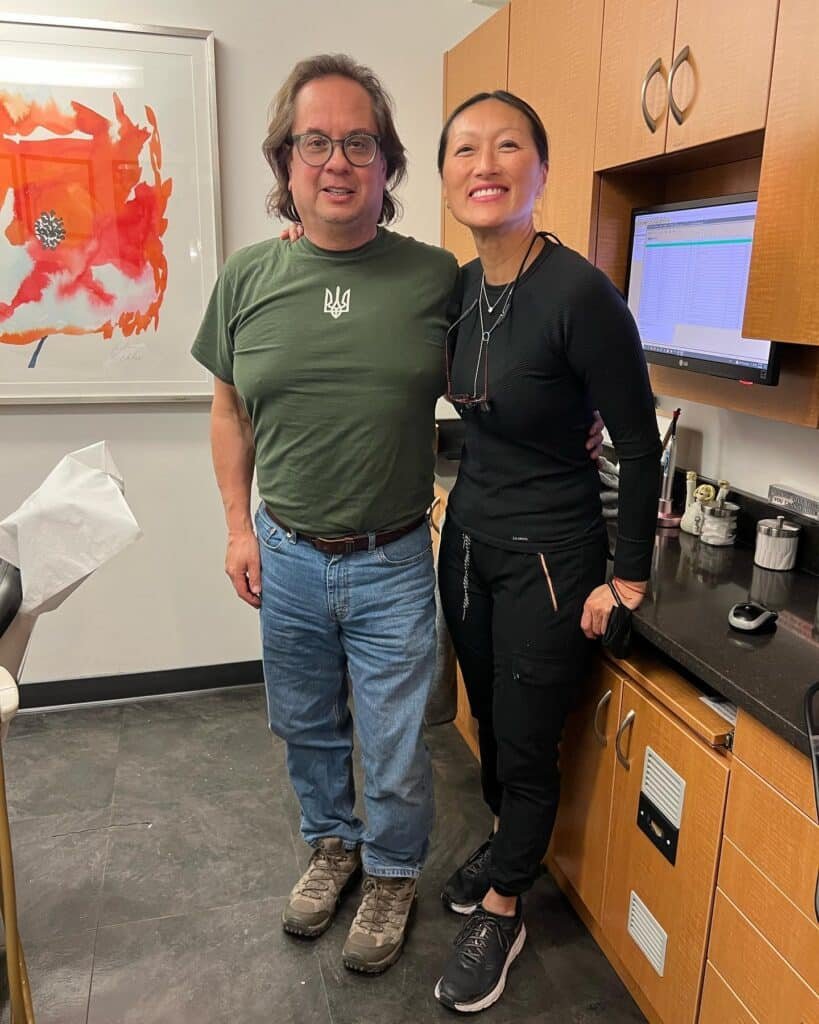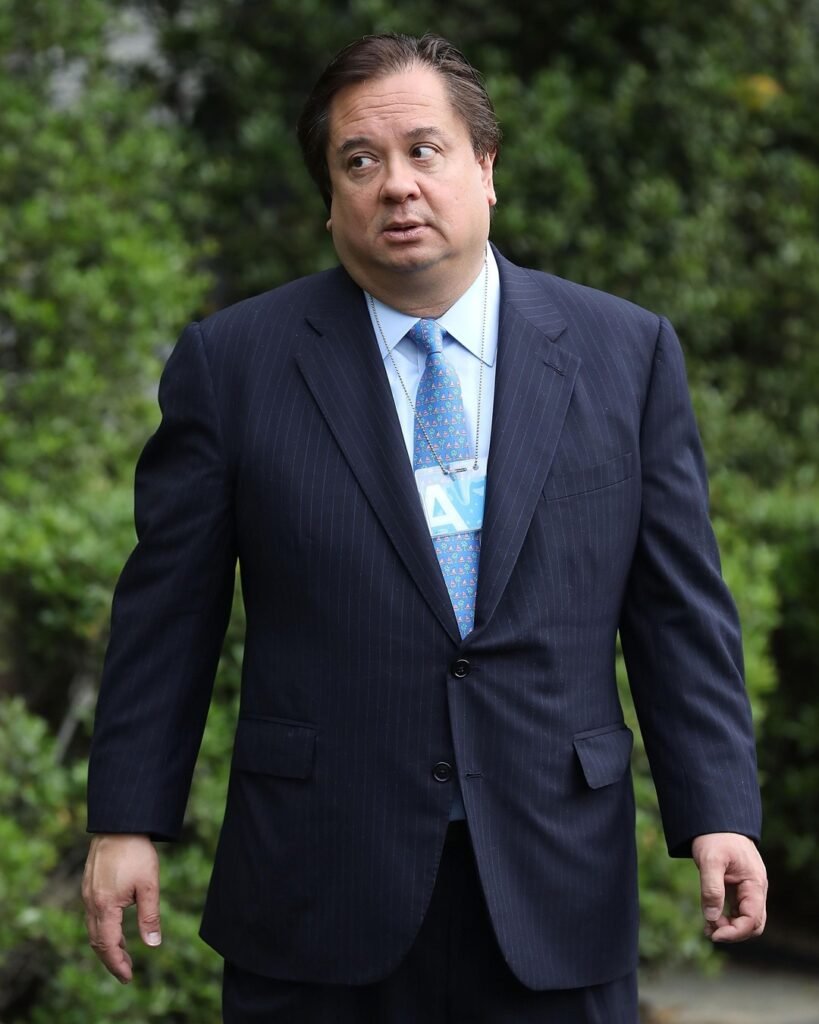George Conway Weight Loss – Remarkable Journey

George Conway’s weight loss story is pretty inspiring. He managed to shed a huge amount of weight, 120 pounds to be exact, and it wasn’t some overnight miracle. It was a real journey, filled with changes to how he ate and how he moved his body.
Lots of people talk about wanting to get healthier, but George actually did it, going from 300 pounds down to 180. It really shows that with a solid plan and sticking to it, big changes are possible. We’re going to look at how he did it and what we can learn from his experience.
Key Takeaways
- George Conway’s successful 120-pound weight loss was achieved through a consistent, balanced approach focusing on healthy eating and regular exercise, not quick fixes.
- His dietary changes involved cutting out processed foods, reducing sugar intake, and focusing on nutrient-dense, whole foods while practicing portion control.
- Conway built a sustainable exercise routine, starting with accessible activities like walking and gradually incorporating strength training and cardio.
- Addressing emotional eating and stress through mindfulness and therapy was a significant part of his mental health approach to weight loss.
- The positive outcomes extended beyond physical changes, leading to increased energy, confidence, and a greater sense of control over his overall health and life.
The Genesis of George Conway’s Weight Loss Journey
The Motivational Spark Behind the Transformation
George Conway’s decision to embark on a significant weight loss journey wasn’t a sudden whim. For years, his lifestyle, marked by a demanding career and the stresses that came with it, had gradually led to less healthy habits.
Eating became less about nourishment and more about convenience or comfort, and regular physical activity took a backseat. By his early sixties, George found himself tipping the scales at around 300 pounds. This wasn’t just a number; it was a reflection of how his health had been neglected.
Also Read: Dagen McDowell Weight Loss Journey
A Wake-Up Call for Healthier Living
The real turning point arrived after a routine medical check-up. The results were a stark reminder that his current path was unsustainable. Doctors flagged concerns about his blood pressure and cholesterol levels, warning him of potential future health complications if changes weren’t made.

This news was a serious wake-up call. George realized that his well-being was suffering, and it was impacting his ability to feel his best day-to-day. He felt tired and sluggish, a far cry from how he wanted to feel.
The Turning Point: Acknowledging the Need for Change
Faced with this health reality, George made a conscious decision to prioritize his well-being. It wasn’t just about appearance anymore; it was about longevity and quality of life. He wanted to be healthier, more energetic, and present for the people he cared about.
This realization marked the true beginning of his transformation. He understood that significant changes were necessary, and he was ready to commit to a healthier future. This marked the moment George Conway decided to take control of his health.
George Conway’s Approach to Shedding 120 Pounds
George Conway didn’t just wake up one day and decide to lose a massive 120 pounds. His strategy was built on making real, lasting changes, not quick fixes. It was a methodical process that focused on what he ate and how he moved his body.
A Foundation of Healthy Eating and Portion Control
George really zeroed in on his diet. He moved away from the convenience foods and comfort eating that had become a habit. Instead, he focused on eating clean, which meant prioritizing whole, unprocessed foods. This wasn’t about deprivation; it was about choosing foods that nourished his body. He also became very mindful of how much he was eating, practicing strict portion control. This combination of better food choices and managing serving sizes was a big part of his success.
The Role of Consistent Exercise and Strength Building
Exercise was another cornerstone of George’s plan. He didn’t jump into intense workouts right away. His approach was to build consistency. This often started with simple activities like walking, which is accessible to most people. As he got fitter, he gradually incorporated more challenging exercises, including strength training and cardio. Building muscle through strength training is important because muscle burns more calories, even at rest. This consistent movement helped him burn calories and improve his overall fitness.
Embracing Whole, Unprocessed Foods
At the heart of George’s dietary shift was a commitment to whole, unprocessed foods. This means cutting out a lot of the stuff that comes in packages with long ingredient lists.
Think fresh fruits, vegetables, lean proteins, and healthy fats. By focusing on these nutrient-dense options, he was able to feel fuller for longer, manage his hunger better, and get the vitamins and minerals his body needed. It’s a simple concept, but sticking to it makes a huge difference in how you feel and your ability to lose weight.
Making these changes wasn’t always easy, but George found that focusing on one habit at a time made the process feel less overwhelming. He learned to listen to his body and make adjustments as needed, which is key for long-term success.
Dietary Strategies for Sustainable Weight Loss
Mindful Eating and Rethinking Food’s Purpose
George really shifted his perspective on food. Instead of seeing it as a way to cope with stress or just fill a void, he started thinking of it as fuel. This mental adjustment was a big deal. He began paying more attention to why he was eating and what his body actually needed. It wasn’t about strict rules, but more about being present with his meals and understanding his hunger cues. This mindful approach helped him break free from old habits.
The idea here is to connect with your food on a deeper level, recognizing that what you eat directly impacts how you feel and function. It’s about savoring each bite and making conscious choices that serve your long-term health goals.
Eliminating Processed Foods and Unhealthy Sugars
A major step for George was cutting out the processed junk. Think sugary drinks, packaged snacks, and anything with a long list of ingredients he couldn’t pronounce. He swapped these out for foods that were closer to their natural state. This meant saying goodbye to a lot of refined carbohydrates and unhealthy fats that were just adding empty calories.
Here’s a look at the kinds of swaps he made:
- Instead of: White bread, sugary cereals, pastries
He chose: Whole grain bread, oatmeal, fresh fruit - Instead of: Soda, sweetened juices
He chose: Water, unsweetened tea, sparkling water with a splash of lemon - Instead of: Candy, cookies, ice cream
He chose: Fresh berries, a small piece of dark chocolate, Greek yogurt
Focusing on Nutrient-Dense Meals
George made sure his meals were packed with nutrients. This meant filling his plate with plenty of vegetables, lean proteins, and healthy fats. These foods keep you feeling full longer and provide the vitamins and minerals your body needs to function well. He wasn’t just eating less; he was eating better. This strategy made sticking to his plan much easier because he wasn’t constantly battling hunger or feeling deprived. His meals became colorful and satisfying, supporting his body’s needs while helping him shed those pounds.
Building a Consistent Exercise Routine
Starting with Accessible Activities Like Walking
George knew that diet was a huge piece of the puzzle, but he also understood that getting his body moving was just as important. He didn’t want to dive headfirst into something too intense that he’d just quit after a week. So, he started simple. Walking became his go-to activity. It was something he could do every day, no matter the weather, and it didn’t require any special equipment or a gym membership. Just putting one foot in front of the other, gradually increasing the distance and pace, was enough to get him started. It was about building a habit, not about pushing himself to exhaustion.
Incorporating Strength Training and Cardio
As George got fitter from his daily walks, he started to feel ready for more. He began adding in some strength training. This wasn’t about becoming a bodybuilder; it was about building muscle, which helps burn more calories even when you’re resting. He focused on basic exercises that worked different muscle groups. Alongside this, he introduced some cardio that got his heart rate up a bit more than just walking. Think of it as gradually turning up the dial on his activity level. It was a slow build, making sure each new step felt manageable.

Gradually Increasing Workout Intensity
The real trick to making exercise stick was not trying to do too much too soon. George’s approach was all about progression. He’d stick with an activity until it felt comfortable, and then he’d find a way to make it a little bit harder. Maybe that meant walking a longer route, adding a few more pounds to his weights, or picking up the pace during his cardio sessions. It was a steady climb, ensuring that he wasn’t getting discouraged by feeling overwhelmed. This gradual increase meant his body could adapt, and his mind stayed motivated because he was consistently achieving small wins.
The key was consistency over intensity, especially in the beginning. Building a routine that felt sustainable was more important than any single workout session. It’s about showing up for yourself, day after day, even when it’s not glamorous.
Overcoming Challenges and Staying Motivated
Addressing Emotional Eating and Stress
George Conway found that a big part of his weight loss wasn’t just about what he ate or how much he moved, but also about why he was eating. He realized that stress and difficult times often led him to food for comfort. He had to really look at his relationship with food and figure out what was driving those habits. It wasn’t always about being hungry; sometimes it was just boredom or stress. He started using things like mindfulness and journaling to help him deal with emotions without reaching for snacks. It was about finding new ways to cope.
It wasn’t just about shedding pounds; it was about healing his mind and finding a better way to handle life’s ups and downs. Breaking that cycle of emotional eating was a major step.
The Importance of Support Systems
George mentioned that having people in his corner made a huge difference. Friends and family kept him on track and cheered him on. Knowing he had a support system meant he didn’t feel so alone when things got tough. It’s easy to feel discouraged when progress seems slow, but having people to talk to and who believed in him helped him keep going.
Maintaining Momentum Through Slow Progress
Weight loss isn’t always a straight line down. George experienced times when the scale didn’t budge, or he felt like he wasn’t seeing the results he wanted. Consistency was the key during these slower periods. Instead of giving up, he reminded himself that the effort would pay off eventually. He focused on the small wins and the overall feeling of getting healthier, rather than just the number on the scale. This patient approach helped him stay committed long-term.
The Profound Psychological Impact of George Conway’s Weight Loss
Enhanced Energy Levels and Vitality
It’s not just about fitting into smaller clothes; the most significant changes George Conway experienced were internal. Before his weight loss, he often felt drained, like he was just going through the motions. Now, he talks about waking up with a genuine sense of readiness for the day. This boost in energy isn’t just about feeling less tired; it translates into being more present and engaged in his work and personal life. He mentioned feeling like he has a new lease on life, with the stamina to tackle tasks that once seemed overwhelming.
A Renewed Sense of Confidence and Self-Esteem
Losing 120 pounds has done wonders for George’s confidence. It’s like shedding a heavy coat he didn’t even realize he was wearing. This newfound self-assurance isn’t just about his appearance; it’s about proving to himself that he could set a challenging goal and achieve it. This accomplishment has spilled over into other areas, making him feel more capable and less hesitant to take on new challenges. He feels more in control, which is a powerful feeling.
Gaining Control Over Health and Life
Perhaps the most impactful psychological shift for George has been the feeling of taking back control. For a long time, his weight felt like something that was controlling him, dictating his energy levels and even his mood. By making deliberate choices about food and exercise, he’s reclaimed agency over his own well-being. This journey has shown him that significant change is possible, and it’s given him a stronger sense of self-efficacy. He’s learned to manage his relationship with food, which was a major hurdle, and this has helped him feel more grounded. It’s a reminder that consistent effort can lead to profound personal growth, and he’s found that seeking out psychological support was a key part of this process.
- Mindful Eating: Learning to eat with intention, not just out of habit or emotion.
- Stress Management: Developing new ways to cope with stress besides turning to food.
- Consistency: Understanding that small, consistent efforts yield big results over time.
The mental shift was as important as the physical one. It wasn’t just about the number on the scale; it was about rebuilding a healthier relationship with himself and his body.
Maintaining Health Beyond the Initial Transformation
So, George Conway hit his 120-pound weight loss goal. That’s amazing, right? But here’s the thing: the journey doesn’t just stop when you reach a number on the scale. For George, this wasn’t about a temporary fix; it was about making a complete lifestyle overhaul. He’s made these healthy habits a permanent part of his life, and that’s really the secret sauce to keeping the weight off and feeling good long-term.
Making Lifestyle Changes a Permanent Part of Life
It’s easy to get caught up in the excitement of losing weight, but the real challenge is staying on track once you’ve achieved your initial goals. George realized this early on. He didn’t just diet for a few months; he changed how he eats and moves every single day. This means continuing to choose whole, unprocessed foods and being mindful of portion sizes, even when life gets busy. It’s about making these choices second nature, not a chore.
The key is to integrate these changes so deeply that they become your default setting, rather than something you have to constantly think about or force yourself to do.
Setting New Fitness Goals for Strength and Endurance
Now that George isn’t focused on shedding pounds, he’s shifted his attention to building strength and improving his overall fitness. He’s not just maintaining; he’s actively trying to get stronger and increase his endurance. This involves more challenging workouts and pushing his limits in new ways. It’s a different kind of motivation, focusing on performance and capability rather than just the number on the scale. He’s found that setting these new goals keeps things interesting and prevents him from getting complacent.
The Ongoing Journey of Health and Wellness
George Conway’s story is a great reminder that health is a continuous process. It’s not a destination you arrive at and then stop. He’s committed to this ongoing journey, constantly learning and adapting. This includes staying informed about nutrition and fitness, listening to his body, and finding joy in movement. It’s about embracing a life of vitality and well-being, not just for today, but for the future. His dedication shows that sustainable health is a marathon, not a sprint, and he’s clearly in it for the long haul. You can find more about his approach to balanced diet.
Here’s a look at how he’s staying active:
- Strength Training: Focusing on compound movements to build muscle.
- Cardiovascular Exercise: Incorporating activities like cycling and swimming for endurance.
- Flexibility and Mobility: Adding yoga or stretching to improve range of motion and prevent injury.
A New Chapter
George Conway’s journey to shed 120 pounds is a powerful example of what dedication can do. It wasn’t about a quick fix; it was about making real, lasting changes to his lifestyle. He showed us that focusing on balanced eating, regular movement, and taking care of your mental health can lead to incredible results. His story is proof that it’s never too late to take control of your health and that small, consistent steps can lead to big transformations. If George can do it, it really makes you think about what you could achieve with a similar commitment.
Frequently Asked Questions
What motivated George Conway to start his weight loss journey?
George Conway decided to lose weight because he felt tired and sluggish, and his health checkups showed his weight was negatively impacting his blood pressure and cholesterol. He wanted to feel better and be around for his loved ones.
How much weight did George Conway lose?
George Conway successfully lost a significant amount of weight, shedding 120 pounds. He went from weighing around 300 pounds down to a much healthier 180 pounds.
What were George Conway’s main strategies for losing weight?
His approach focused on two main things: eating healthy, whole foods and controlling how much he ate. He also made exercise a regular part of his life, starting with walking and adding strength training and cardio.
Did George Conway use any special diets or pills?
No, George Conway did not rely on quick fixes like special diets or weight loss pills. His success came from making lasting changes to his eating habits and exercise routine, focusing on balanced nutrition and consistent movement.
How did George Conway stay motivated during his weight loss?
He found support from friends and family, which helped him stay on track. He also focused on being consistent, even when progress felt slow, and reminded himself of his goals and how much better he felt.
What are the biggest benefits George Conway experienced from losing weight?
Beyond the physical changes, George feels much more energetic and confident. He also feels more in control of his health and his life, which has positively affected his overall well-being and daily activities.






